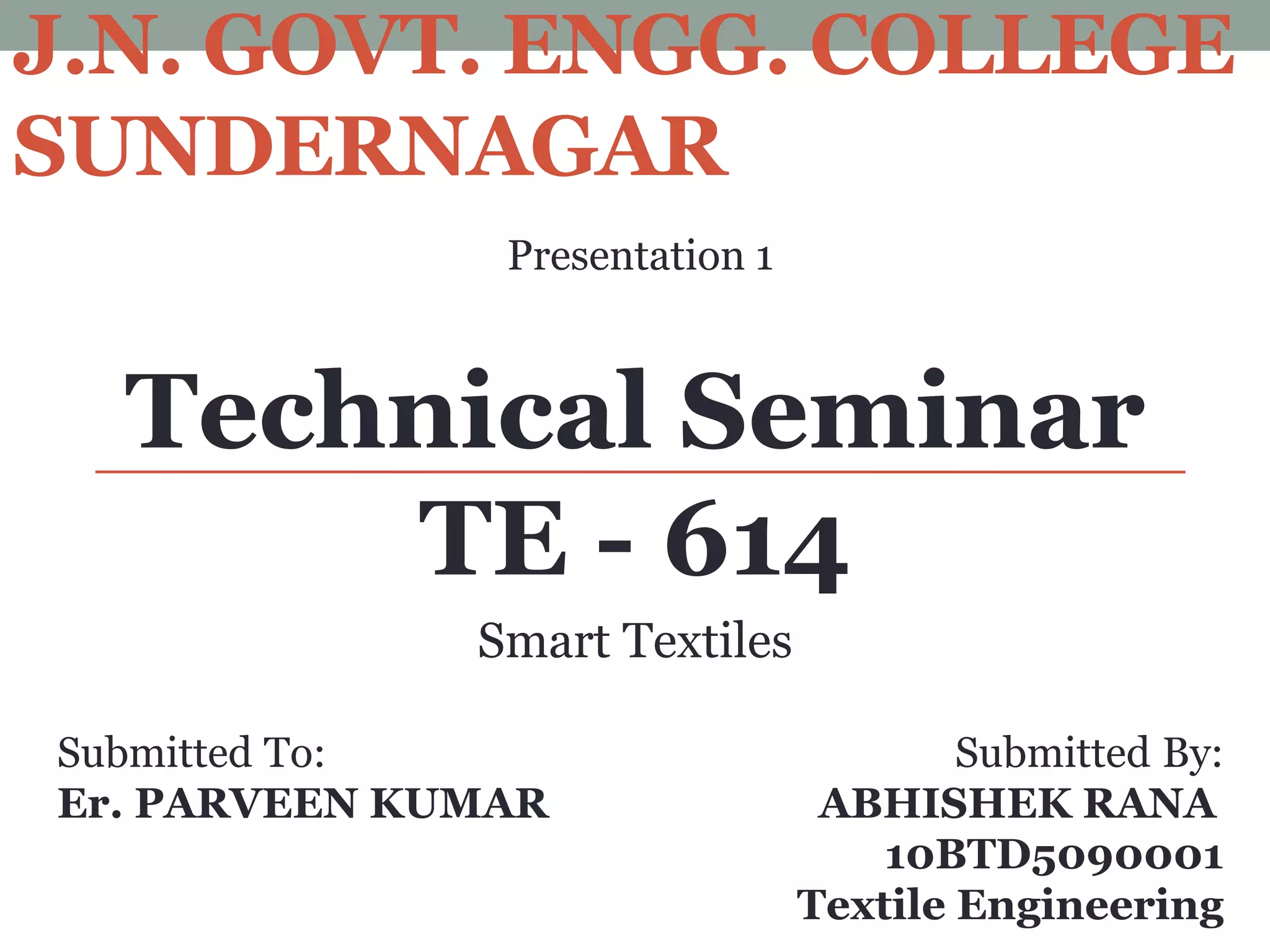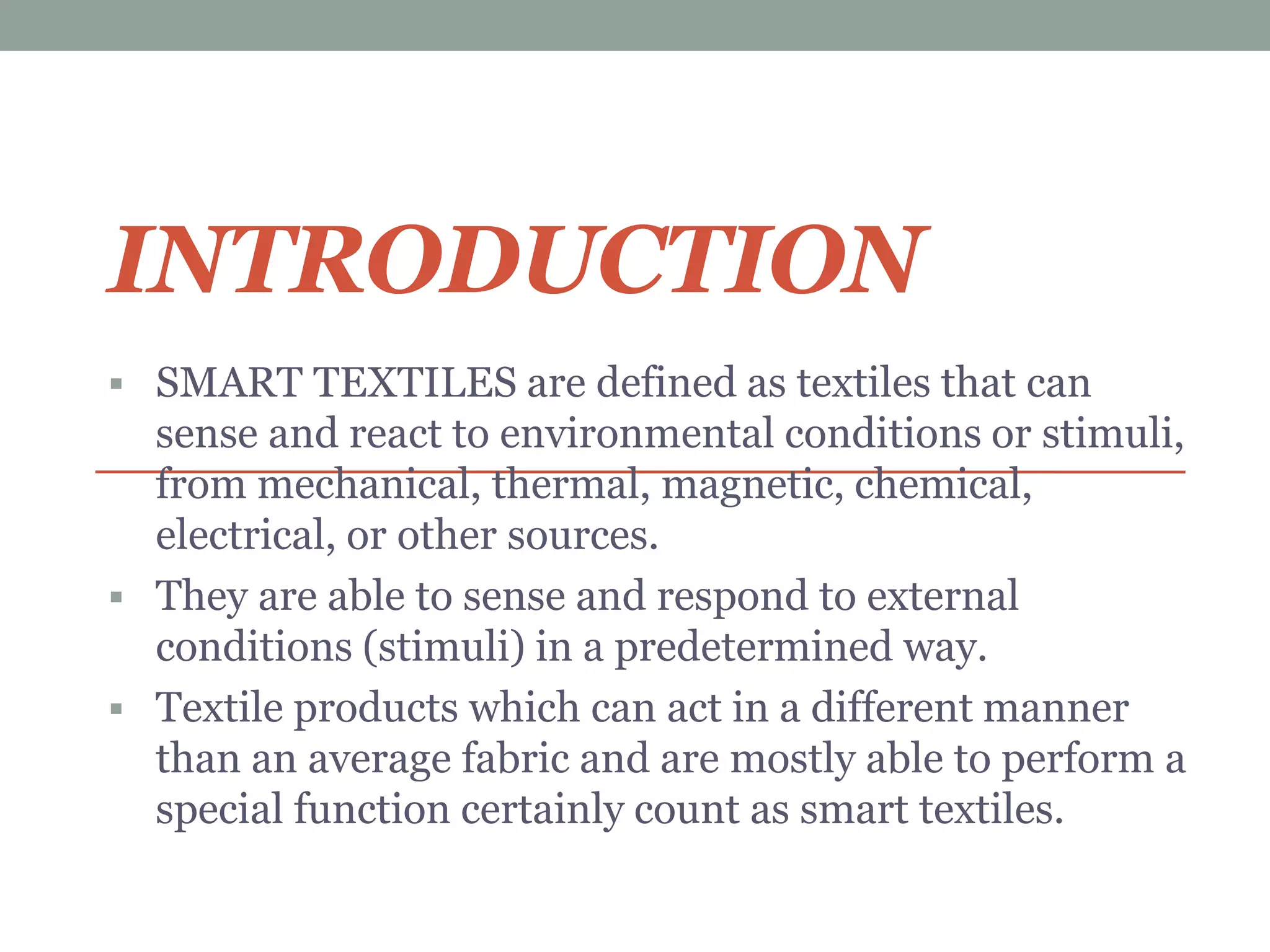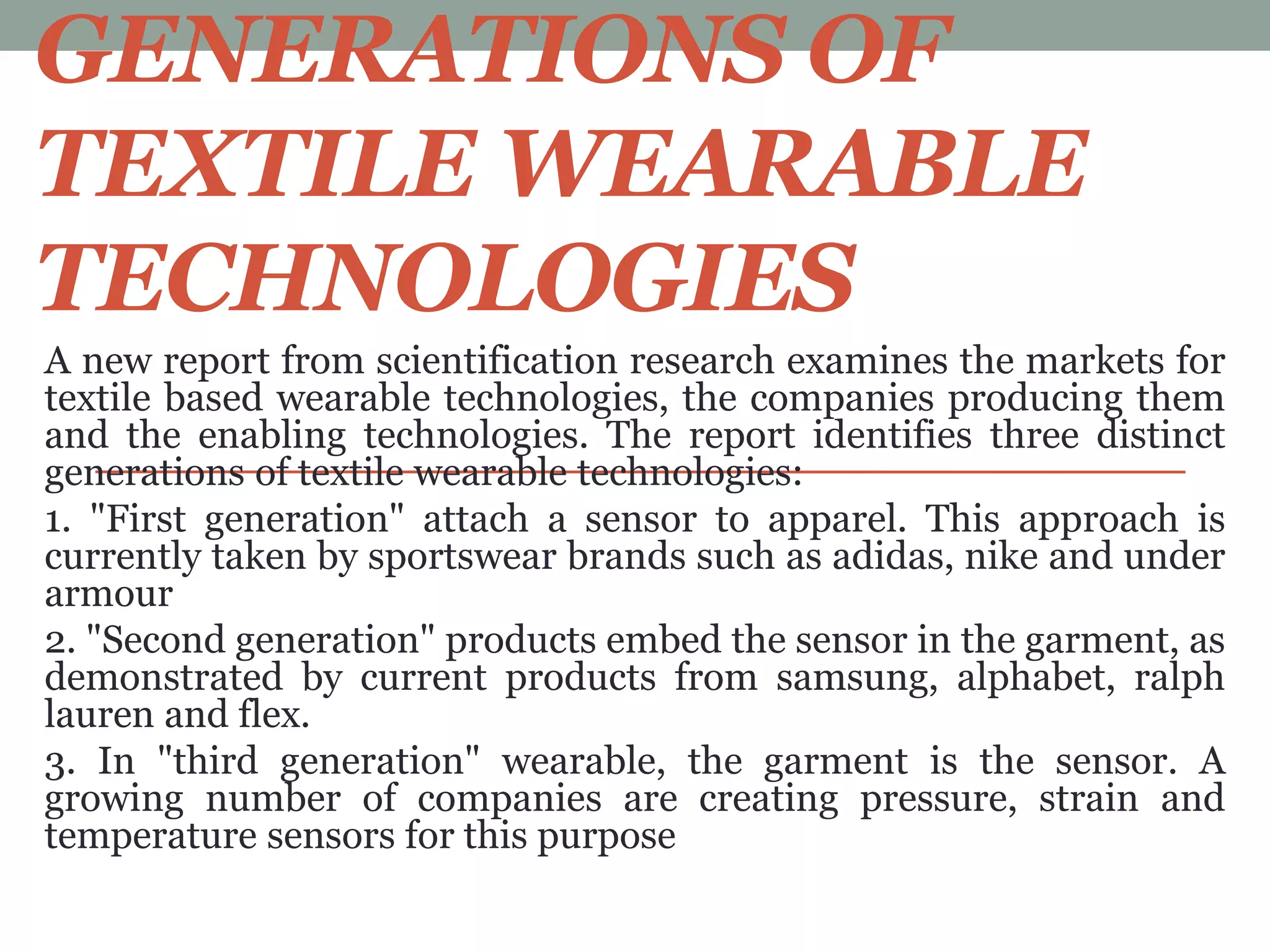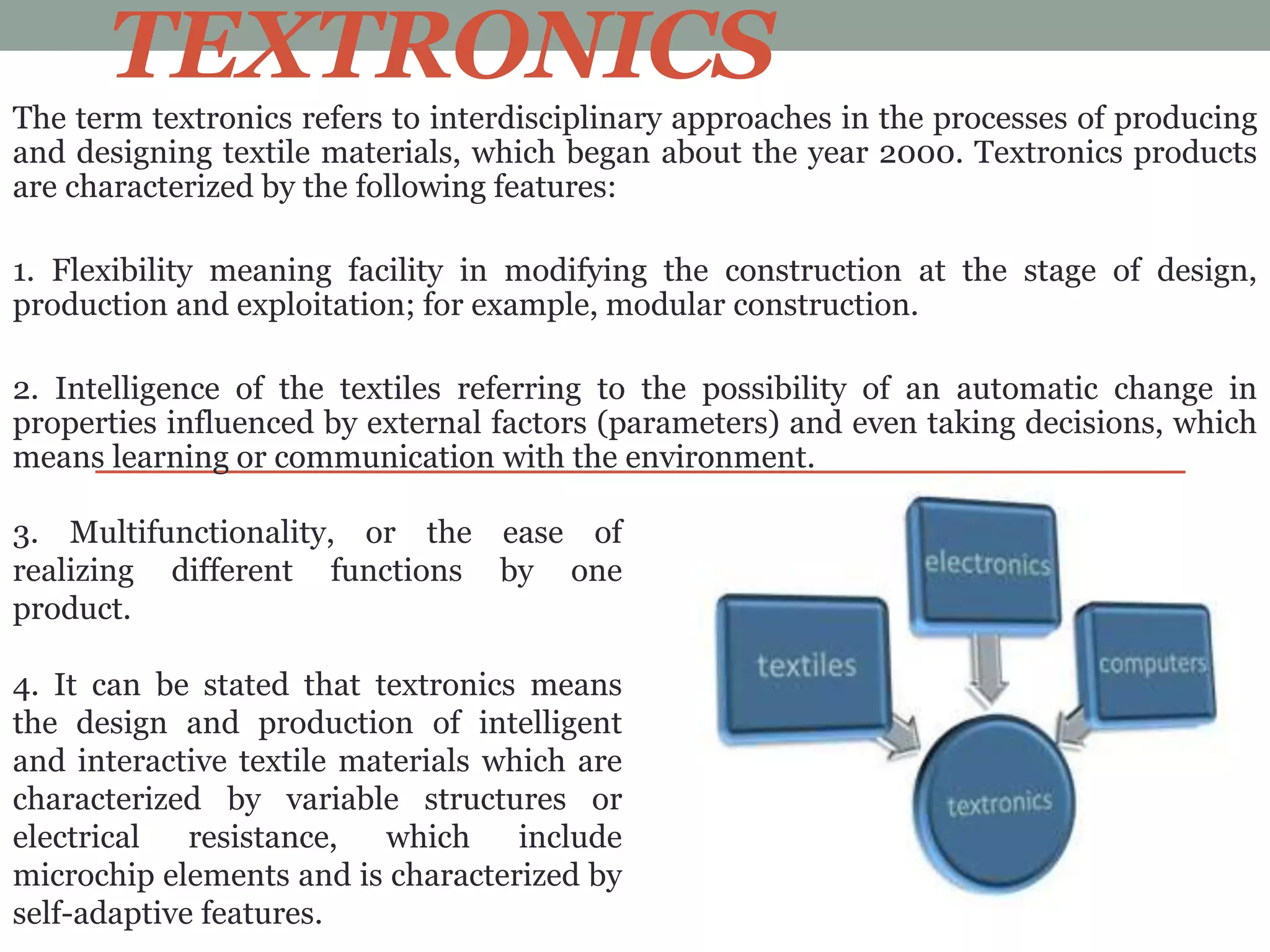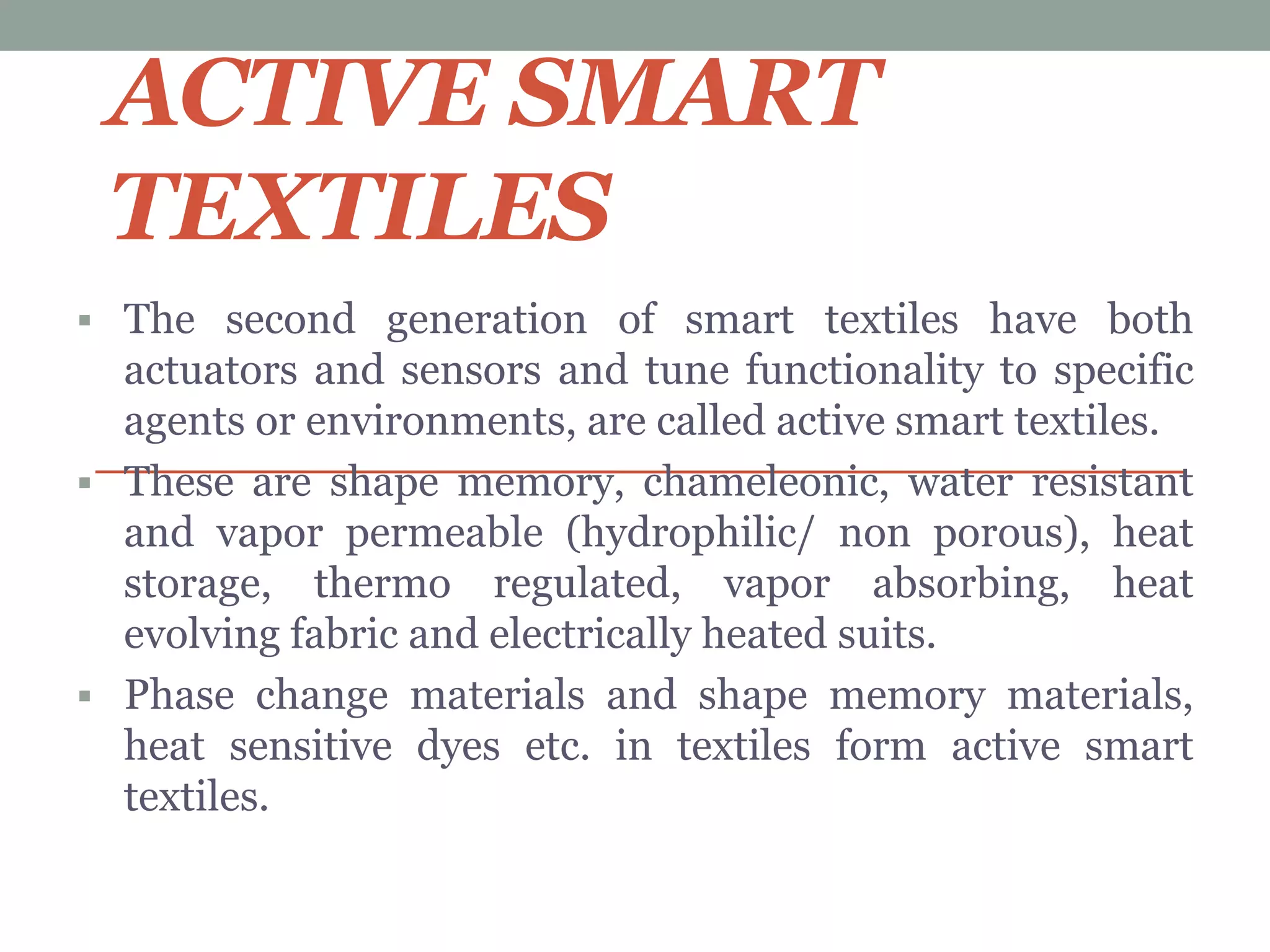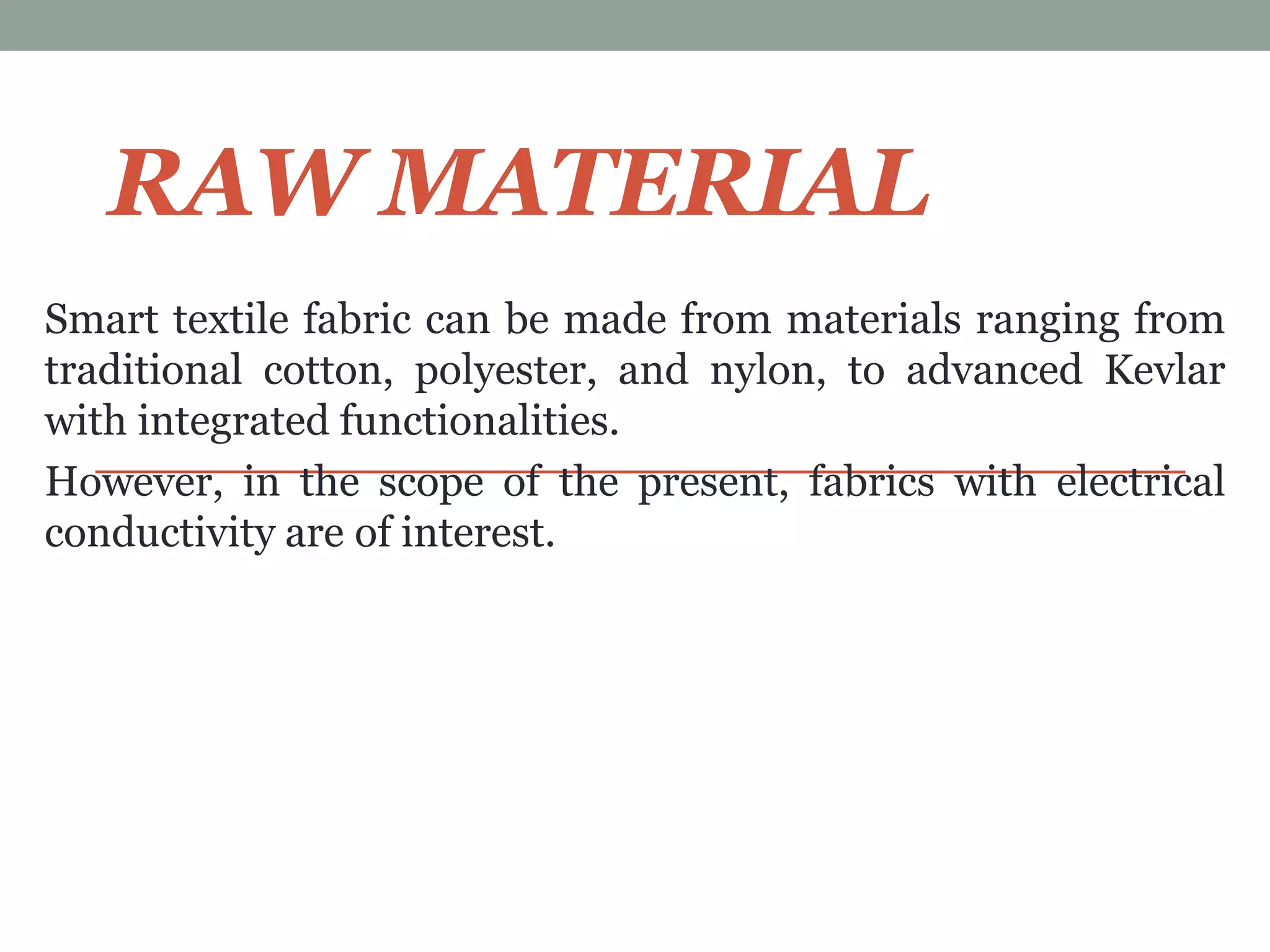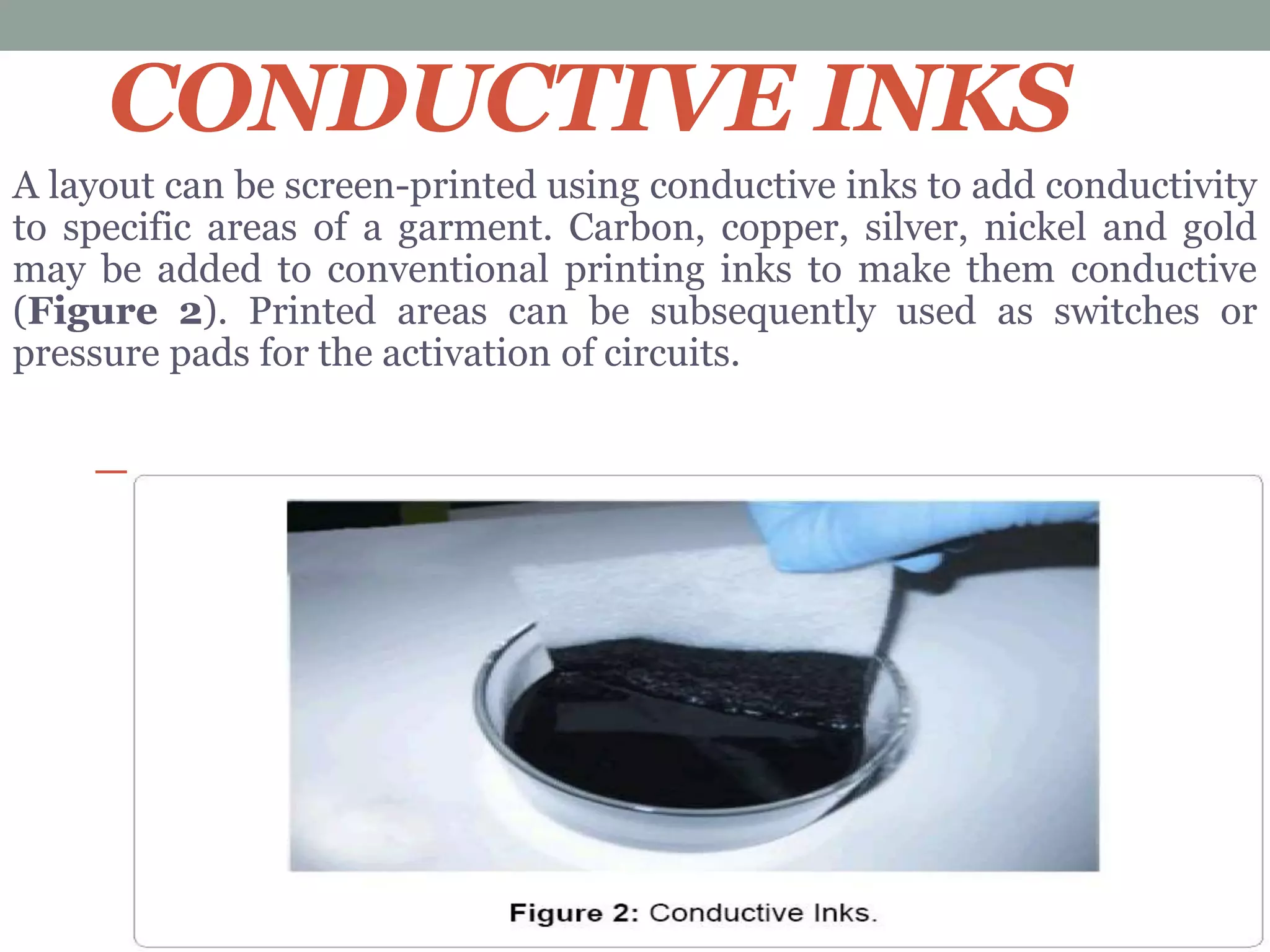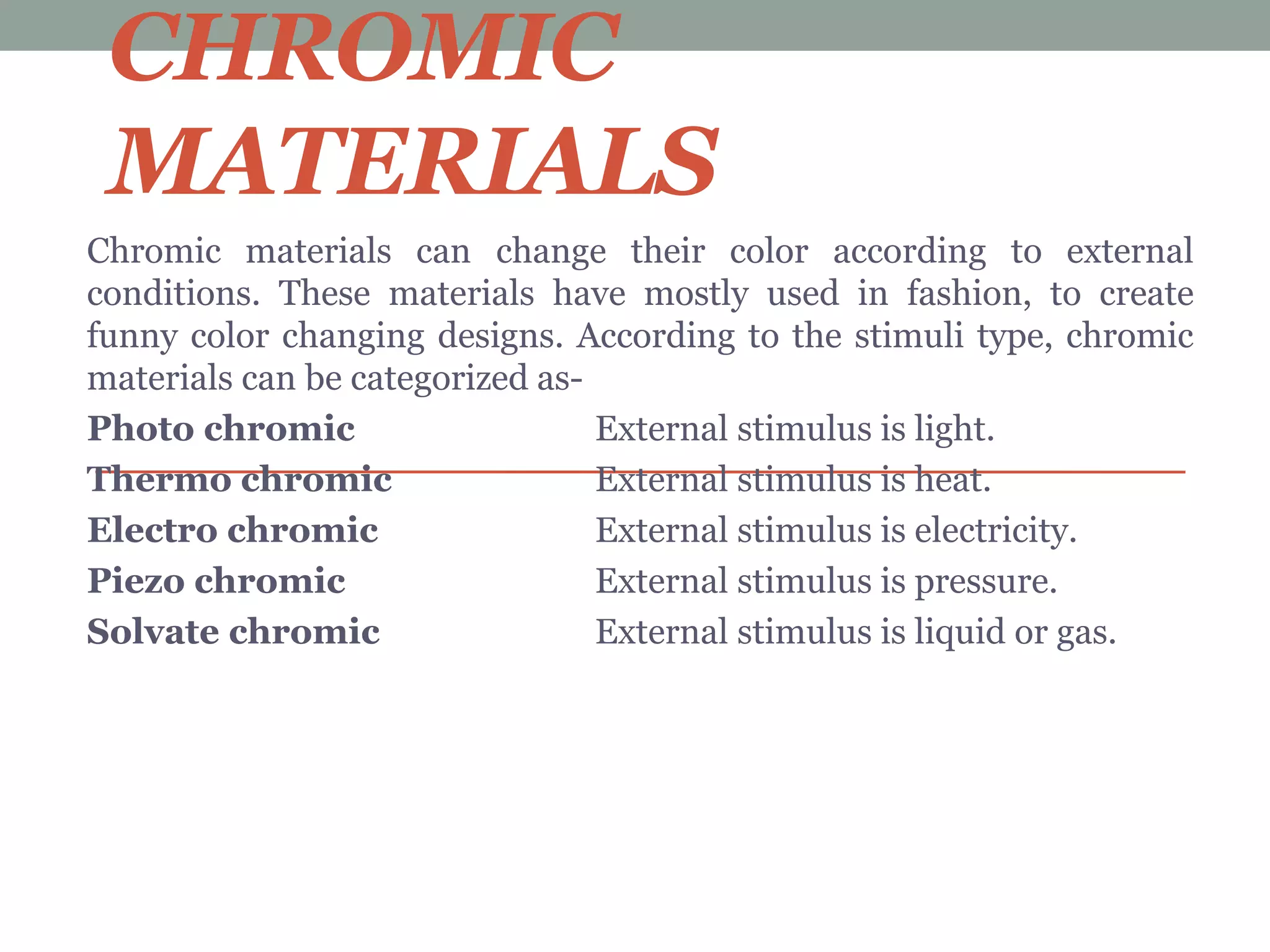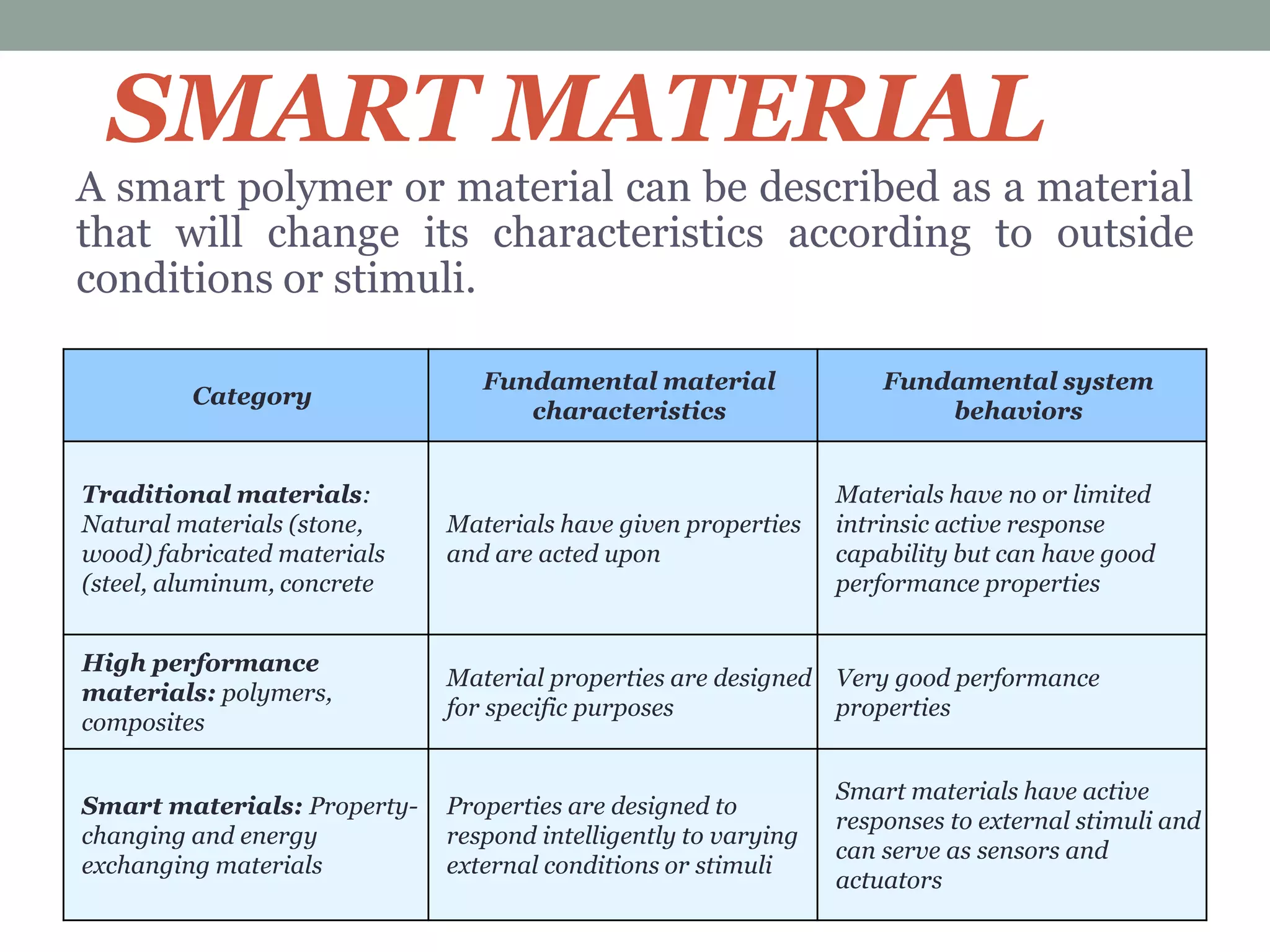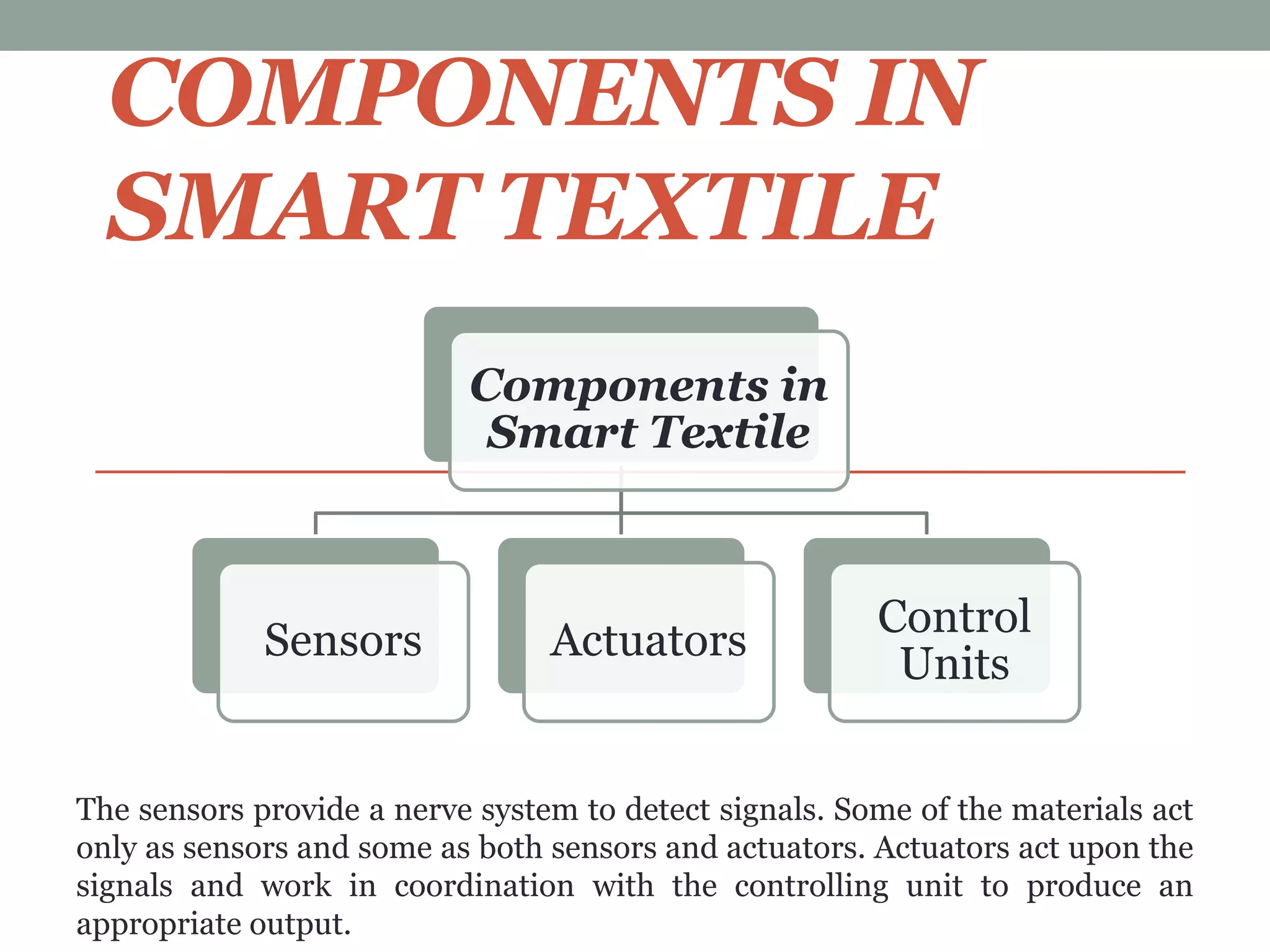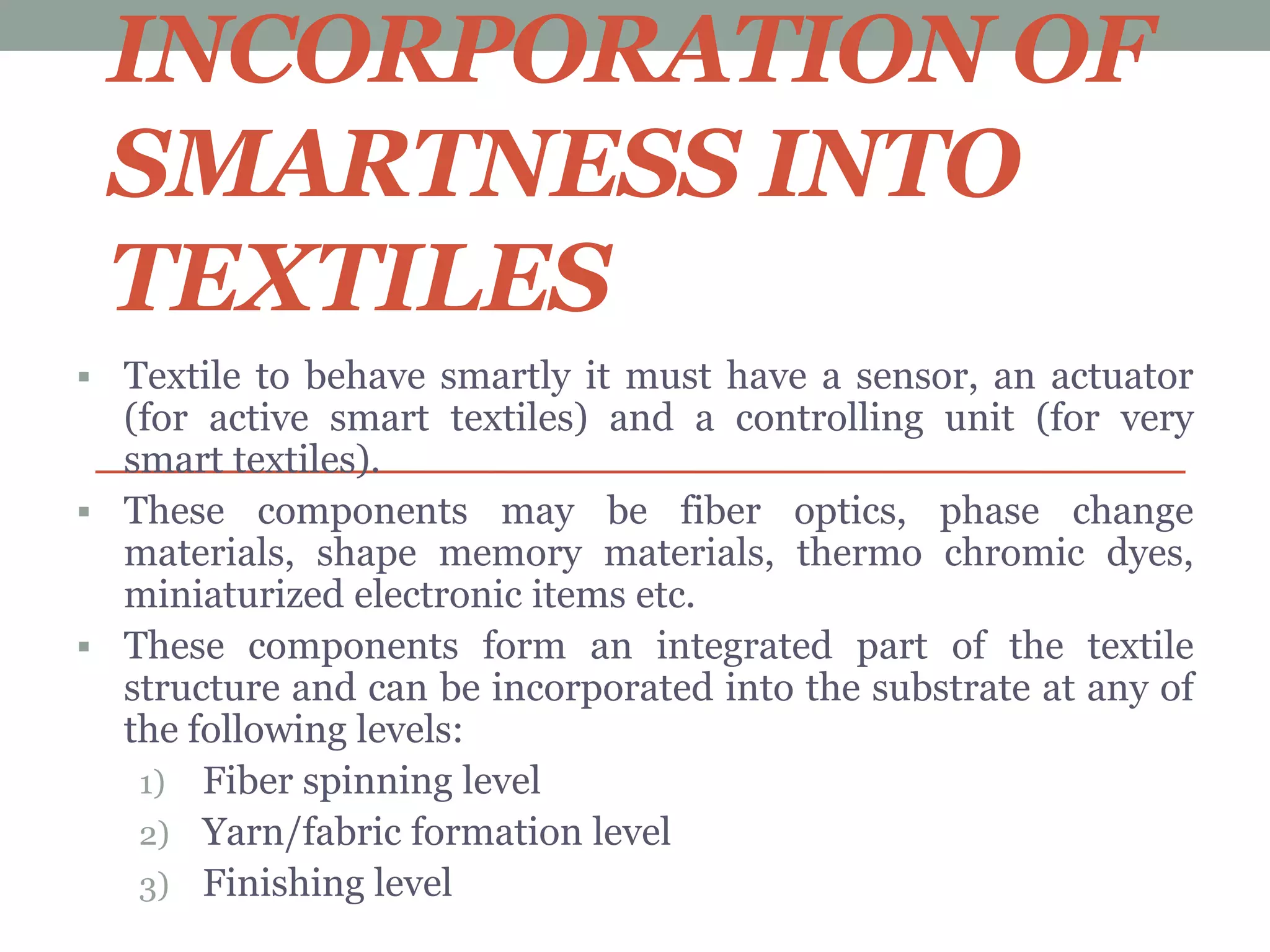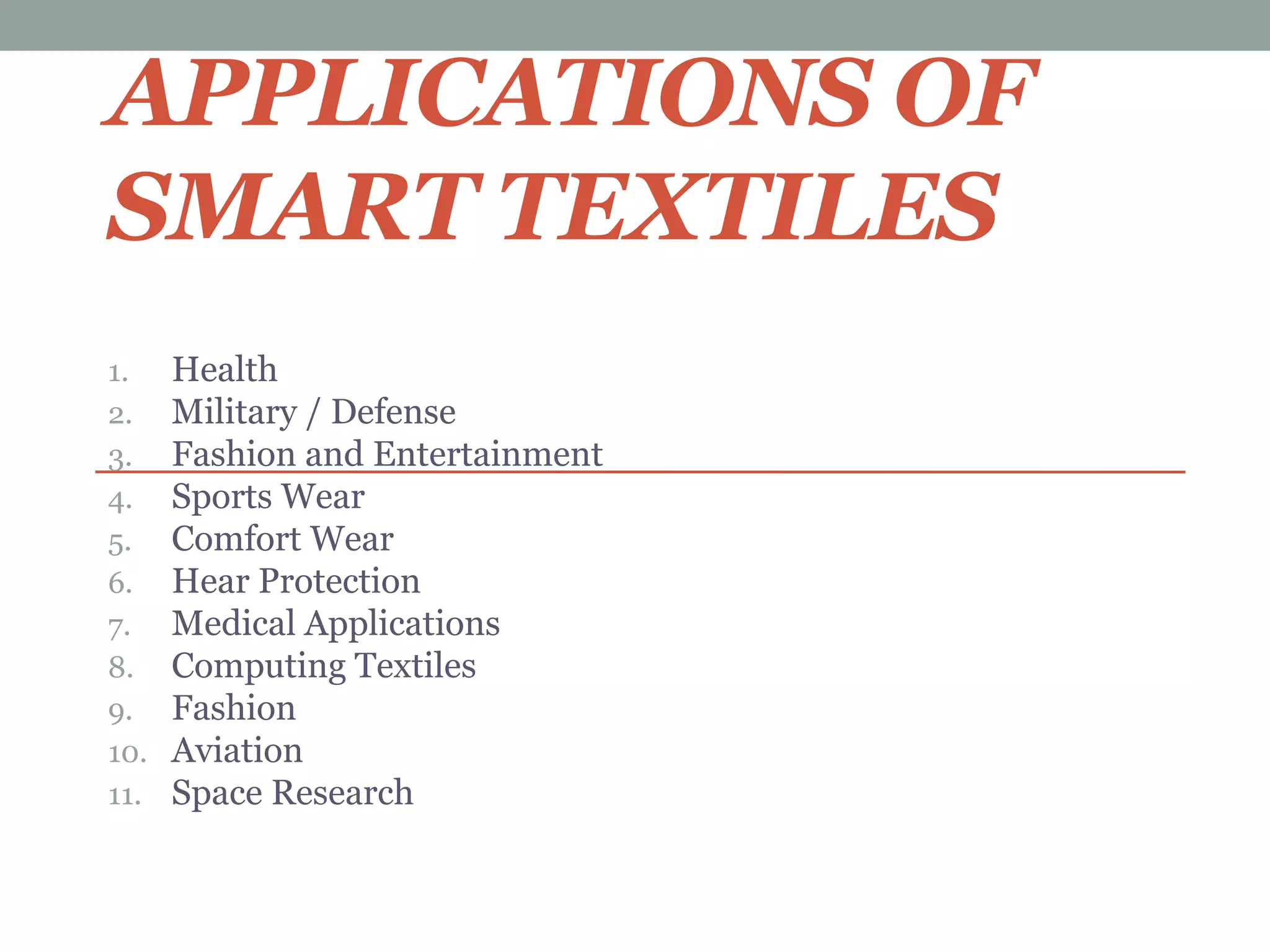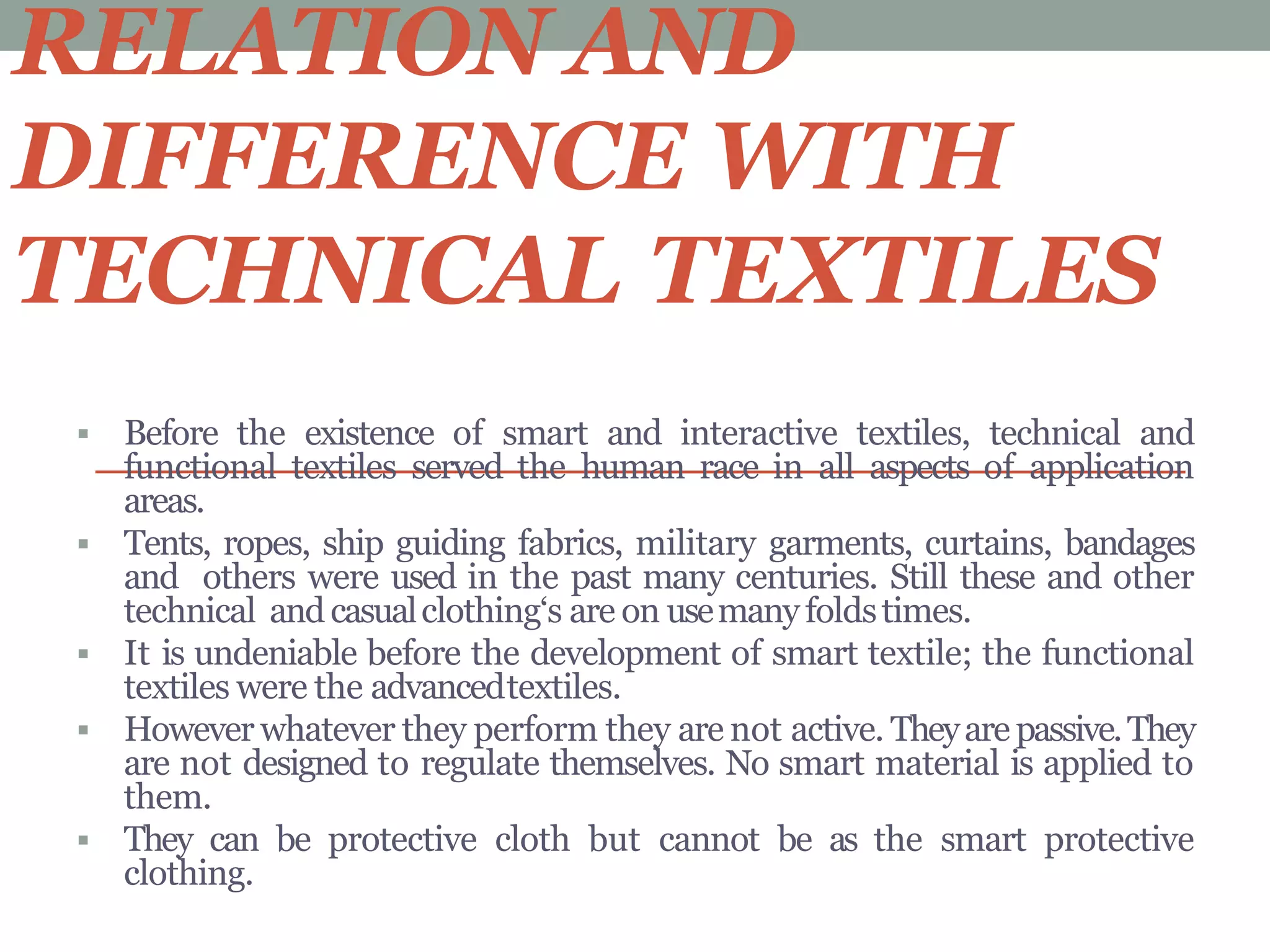This document provides an overview of smart textiles. It defines smart textiles as textiles that can sense and react to environmental conditions or stimuli. It discusses the scope of smart textiles, including the integration of various disciplines required. It outlines different generations of textile wearable technologies and describes textronics. It also covers various topics related to smart textiles like classifications, materials, incorporation into textiles, components, working process, applications, and the relationship to technical textiles.
